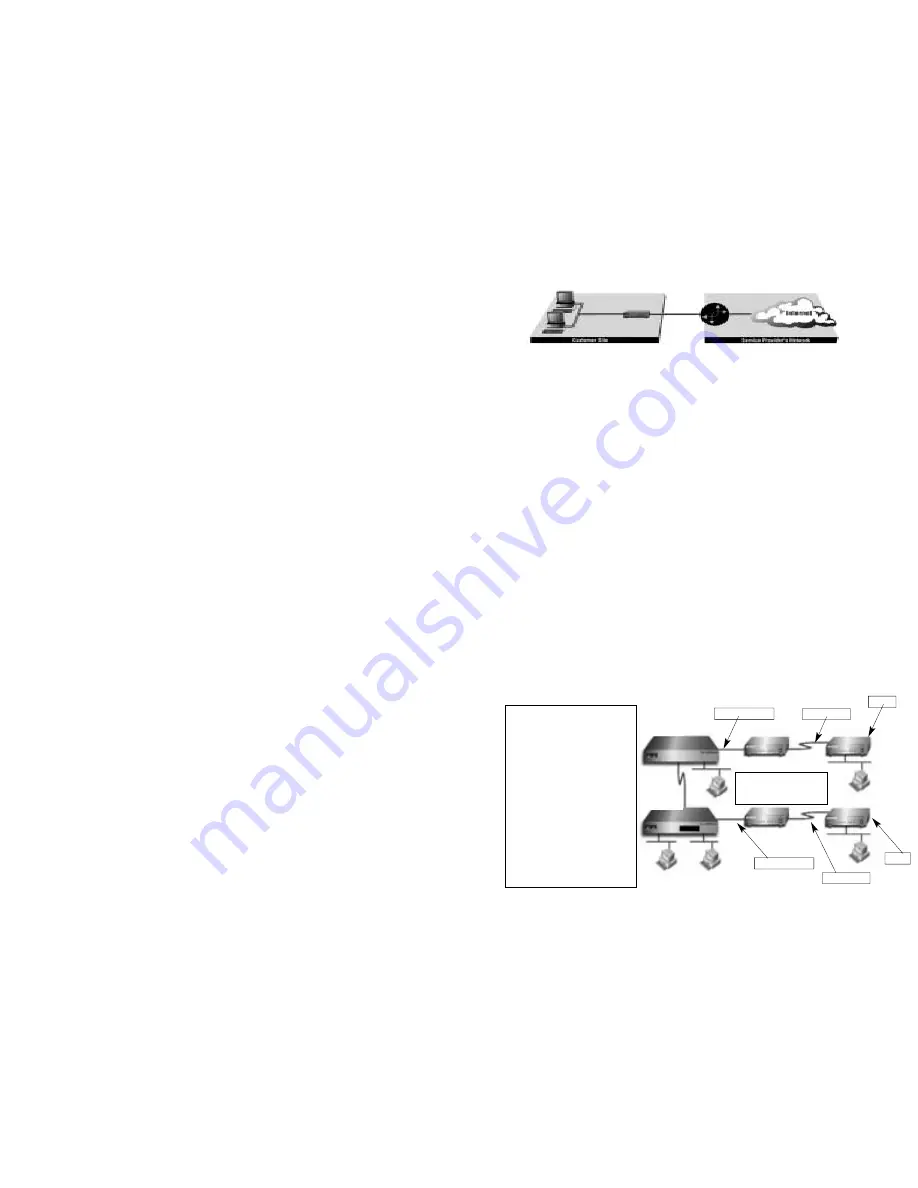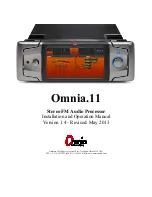
7
3.0 PPP Operational Background
PPP is a protocol used for multi-plexed transport over a point-
to-point link. PPP operates on all full duplex media, and is a sym-
metric peer-to-peer protocol, which can be broken into three main
components: 1. A standard method to encapsulate datagrams
over serial links; 2. A Link Control Protocol (LCP) to establish, con-
figure, and test the data-link connection; 3. A family of Network
Control Protocols (NCPs) to establish and configure different net-
work layer protocols.
In order to establish communications over a point-to-point link,
each end of the PPP link must first announce its capabilities and
agree on the parameters of the link’s operation. This exchange is
facilitated through LCP Configure-Request packets.
Once the link has been established and optional facilities have
been negotiated, PPP will attempt to establish a network protocol.
PPP will use Network Control Protocol (NCP) to choose and con-
figure one or more network layer protocols. Once each of the net-
work layer protocols have been configured, datagrams from the
established network layer protocol can be sent over the link. The
link will remain configured for these communications until explicit
LCP or NCP packets close the link down, or until some external
event occurs.
The PPP Bridging Control Protocol (BCP), defined in RFC
1638, configures and enables/disables the bridge protocol on
both ends of the point-to-point link. BCP uses the same
packet exchange mechanism as the Link Control Protocol
(LCP). BCP is a Network Control Protocol of PPP, bridge
packets may not be exchanged until PPP has reached the
network layer protocol phase.
3.1 APPLICATIONS
In situations where a routed network requires connectivity
to a remote Ethernet network, the interface on a router can
be configured as a PPP IP Half Bridge. The serial line to the
remote bridge functions as a Virtual Ethernet interface, effec-
tively extending the routers serial port connection to the
remote network. The bridge device sends bridge packets
(BPDU's) to the router's serial interface. The router will
receive the layer three address information and will forward
these packets based on its IP address.
Figure 1 shows a typical Cisco router with a serial interface
configured as a PPP Half Bridge. The router serial interface uses
a remote device that supports PPP bridging to function as a node
on the remote Ethernet network. The serial interface on the
Cisco will have an IP address on the same Ethernet subnet as
the bridge.
For example, the customer site is assigned the addresses
192.168.1.0/24 through 192.168.1.1/24. The address
192.168.1.1/24 is also the default gateway for the remote net-
work. The above settings remove any routing/forwarding intel-
ligence from the CPE. The associated Cisco configuration will
set serial interface (s0) to accommodate half bridging for the
above example.
Authentication is optional under PPP. In a point-to-point
leased-line link, incoming customer facilities are usually fixed
in nature, therefore authentication is generally not required. If
the foreign device requires authentication via PAP or CHAP,
the PPP software will respond with default Peer-ID consisting
of the units Ethernet MAC address and a password which
consists of the unit’s Ethernet MAC address.
Some networking systems do not define network numbers
in packets sent out over a network. If a packet does not have
a specific destination network number, a router will assume
that the packet is set up for the local segment and will not for-
ward it to any other sub-network. However, in cases where
two devices need to communicate over the wide-area, bridg-
ing can be used to transport non-routable protocols.
Figure 2 illustrates transparent bridging between two
routers over a serial interface (s0). Bridging will occur
between the two Ethernet Interfaces on Router A (e0 and e1)
and the two Ethernet Interfaces on Router B (e0 and e1).
Patton
2720
Bridge
Ethernet LAN
PEC Device w/ Serial I/F
Router
Figure 1. Cisco router with serial interface, configured as PPP Half Bridge.
!
no ip routing
!
interface Ethernet0
ip address 1.1.1.1 255.255.255.0
bridge-group 1
!
interface Serial0
ip address 1.1.1.1 255.255.255.0
encapsulation PPP
bridge-group 1
!
interface Serial1
ip address 2.2.2.2 255.255.255.0
bridge-group 1
!
bridge 1 protocol ieee
!
Router A
Router B
e0
e0
S1
e1
S1
S0
S0
LAN
LAN
LAN
LAN
LAN
Serial Interface
Serial Interface
Using Bridge-Groups, multi-
ple remote LANs can be
bridged over the wide-area.
8
2720/I
2720/I
T1/FT1 Link
T1/FT1 Link
Figure 2. Transparent bridging between two routers over a serial interface.






































